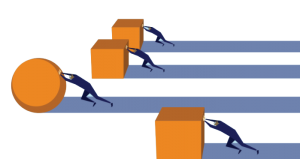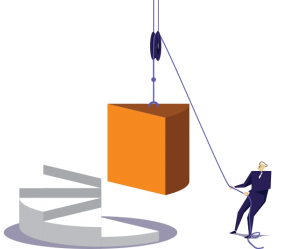A Digital Marketing Agency Rebuilt its Website; 9 Lessons Learned
Every company knows when it’s time for a new website and ours was way overdue. So, we assembled our creative director, WordPress programmer, designer, SEO maven, two partner-level strategists, tons of digital marketing experience, a 6-month launch window and aimed our sights at a July 4th birth. Well, here it is nearly 2018 and I hope that when you read this blog and click HERE – you will see a beautiful new website; that’s way late, over budget and totally worth it. Here’s what we learned so you don’t have to.
#1: There is a reason for the process we honed for customer website projects, which includes sticking to a budget and a plan, assembling a tight dedicated team that focuses on one project at a time, and being ever vigilant for “scope creep.” Of course, in classic fashion we threw all that away when we built our own site…
#2: One project manager for all tasks, so there is an overall ownership of the process and deliverables. Since this was not a client’s web site, we did not assign it a project manager and instead split the tasks between team members and relied on weekly team calls to keep us up to date.  The project became incredibly complex between, content, art, imagery, SEO, animation, programming and more. We had lots of Google docs and flow charts to document it all, but not an overall project manager to keep us efficient and on task, which resulted in duplicate work, over-communications, and frustrations.
The project became incredibly complex between, content, art, imagery, SEO, animation, programming and more. We had lots of Google docs and flow charts to document it all, but not an overall project manager to keep us efficient and on task, which resulted in duplicate work, over-communications, and frustrations.
#3: Go For #ProgressNotPerfection: No matter how hard you work, how diligent and detail-oriented your team is or how much proofing or Q&A you do, there will still be errors, bugs, and oversights when you go live. A website project is never truly completed. There will always be things to fix or to upgrade. With our ever-evolving array of browsers, apps, operating systems, and devices — it’s nearly impossible for our digital creations to “behave” perfectly across all devices and all browsers all the time. Focus on progress, not perfection. That is why we chose to launch the site before it was perfect, and we keep working it.
#4: Whatever your budget for time, resources, and financial investment, multiply it by at least two. Everything takes longer, costs more, and requires more resources than you can imagine. But it’s worth it, because your website is the single most important marketing asset you have. It’s your digital home and gateway to growth. This is not where you want to skimp or think short term. At some point, we tossed the budget aside in favor of building the best website we could, knowing that we’d never regret it.
#5: Rethinking your website is like marketing-soul-searching. It forces you to look in the mirror and decide what your company is all about. It questions your unique value proposition, what your brand stands for and what it should look like, who your customers are and where to focus. We ended up with a lot of ideas and content on the cutting room floor, but now we are ready for battle. Deciding to rebuild your website is a lot like reinventing your business.
#6: Simple is beautiful. There are very few websites that can convey a lot of meaning with very little. For the rebuild of our site, simplicity drove its design and its messaging. To break down this concept, I think of three important areas that comprise simplicity:
- How effective we are at enabling the user to find information
- How we leverage space to make the visitor feel welcomed
- How we place content and art across the site to narrate our story

#7: Your visitor’s attention span is short. As you rebuild your site, the less information that’s needed to explain your brand’s story, the more powerful – and better – the brand experience will be.
#8 Overlays and CTAs. We chose to keep the calls to action efficient and take the visitor to an overlay form that hovers directly on the page rather than whisk them away to a form on another page and force the use of a back button. This simplifies the creation of the CTAs and Forms and gives the user a quick way to engage with us, without leaving the page. One of our more brilliant decisions.
Yes, one of the main reasons we were forced to take on building a new site was to become mobile friendly. To any of our clients and prospects it was painfully obvious that our old website did not offer a great experience on the smartphone. We chose a WordPress theme for the new site that allowed us to control the user experience on the phone. Now we can choose what page elements to leave out and how to stack them for the best possible experience. This is a game-changer and a must-have.
#9: Cookie Cutter or Custom? This is a tough one, you can either design in photoshop and PHP program each page to exact specifications, or pick one of a myriad WordPress templates and join the herd. Or do what we did and find a middle ground. We began with a WordPress theme with a rich palette of built-in interface elements. But we also tasked our best designer with custom designing page layouts based on those elements. We also made every effort to craft reusable layouts that could be utilized in multiple locations on the site – for example: a two-column row with an image, copy blurb, and call-to-action button. You’ll see these templates across the site with unique content in every instance. This was not the easiest, quickest, or least expensive way to build a site, but I think we have the best of both worlds: a custom looking site without having to custom build every single item.
So now what?
With the launch of the new site we are going to practice what we sell. We have a marketing strategy warming up in the wings that will employ Paid Search and Social, SEO and Marketing Automation, all designed to maximize our new site’s ability to generate qualified leads.












